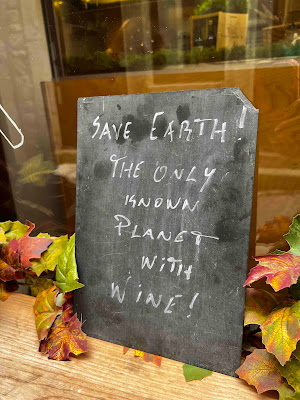Douro Valley Port Wine Tour
Our last sampling of Portugal is in the north of the country. Our home base was the city of Porto. One of our first adventures was a wine tour to the Douro valley where port wine has been produced for several centuries. It is one of the oldest types of wine made, and as most of you know it is much sweeter than most wines. It is typically enjoyed after dinner, not before or during.
Many of the wine estates that make port are on the east side of mountain range between the City of Porto and the border with Spain. There are several dams on the Douro River, so we traveled by small bus to the wineries. Little land has seemed level in Portugal, and the north seems steeper and more mountainous.
This picture also is showing new plantings. Often the grape vines live beyond 100 years but not forever.
We had tours at two wineries. The first was at the small winery where they still stomp the grapes by foot (if you are a fan of I Love Lucy, you will recall Lucy and Ethel). We arrived a day late and they were emptying the grape skins.
Looks like a pretty messy business. Below is our guide at the small winery. We are in agreement that the Portuguese are easy on our eyes with their olive colored skin and their ability to add to their conversation with their hands as Italians do.
This young man explained how this huge grape growing area is a UNESCO site. That means no pesticides or industrial fertilizers can be used and how adding irrigation water can only be done under severe drought with river water (not treated water). Olive trees are typically part of the plants at a winery as they often make olive oil as well. The trees also serve to hold the soil on the steep hillsides. The rock of the area also has a purpose. The schist rock adds minerals, holds heat, and the grape stakes here are of schist (black stakes). We loved the rock work on the steep slopes where they grow their grapes.
At the very large winery tour, things like the vats where the initial processing occurs are very large - 100,000 gallons worth of port.
Their winery is mechanized so the space between rows of grapes are wider. As with the small wineries, the land is terraced.
Part of our tour had us take a one hour boat tour along the Douro River. I had hoped to take the river back to Porto, but the darn dams along the river limit boat passage.
On our way back to Porto on the bus, we stopped at a viewpoint.
I noticed in a shop window what might sum up the day:
While our guest house had little to do with the wineries, our special place in Porto, InPatio Guest House, reminds us of the small winery and the attention to the best of whatever is the subject (growing, environment, and safe and healthy food). The foods they presented to us were the best examples of Portuguese cuisine and all grown or raised in their country. We have appreciated and enjoyed all of our accommodations, but this place was the best.
Not shown in the picture is the freshly squeezed orange juice moments before our arrival in the breakfast room, the freshly baked breads and croissants, and coffee as we like it.











You were absolutely correct in knowing I would love this breakfast.
ReplyDeleteWe just got back from camping so not see till now. The stone wall is beautiful. And your food at your place of stay is gorgeous. All the colors. Like seeing the grape stomping. Do you buy olive oil there and bring home? Debbie
ReplyDelete